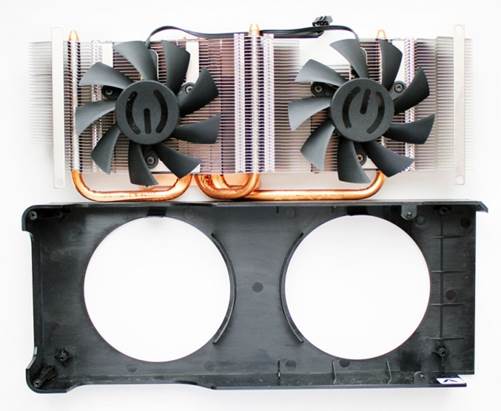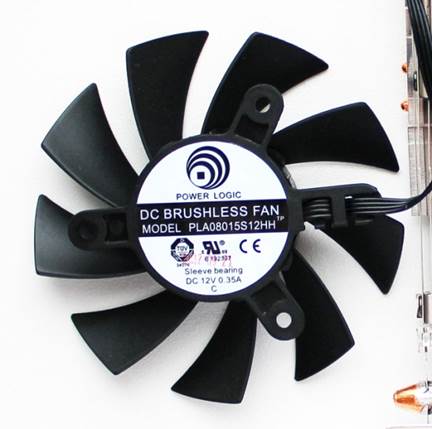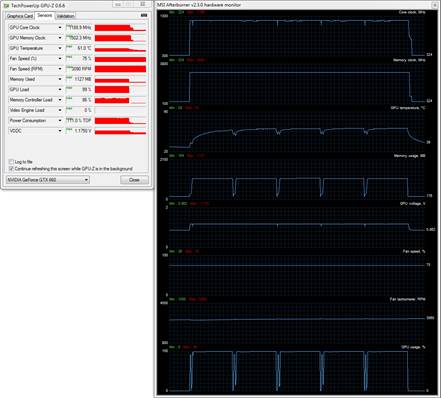Today we are talking about three completely
different graphics cards from EVGA, Gigabyte and MSI, which are going to
compete for the title of the fastest, the quietest and the coolest GeForce GTX
660.
We tested the Nvidia GeForce GTX 660
graphics card from Zotac. We realized it was a good solution which
eventually became widely used, its retail price fell to the recommended level
($229) and even lower. This type of price has been popular among end-users, each
graphics card makers has released not only a copy of the source GeForce GTX 660
but also two or three or even eight variations so that people could flexibly
choose what suits them. There are some really interesting products with
original coolers and increased clock rates. That is about GeForce GTX 660s which
we are telling you in this review. They are products coming from the famous EVGA
Corporation, Gigabyte Technology and Micro-Star International.
Products joining in the tests
EVGA GeForce GTX 660 FTW Signature 2 (02G-P4-2663-KR)
EVGA has made a record creating variations
based on the GeForce GTX 660. This company offered eight models at the
time when this review was written. Having price range from $239 to $279, these
products differ in coolers, clock rates and memory capacity. To carry out the
test, we chose an EVGA GeForce GTX 660 FTW Signature 2 plus 2GB of
memory.
Its compact cardboard box is designed in a
simple style. You can see main product-related information, including the kind
and capacity of memory, on the front of the box.
On the back, you can see a list of compatible
technologies, accessories, video interfaces and awards achieved by the product.
The graphics card is, moreover, covered into antistatic and soft packs inside
the box. It comes with one DVI->D-Sub adapter, power adapter (two
PATA->one 6-pin plug), one CD with drivers and EVGA Precision X, one EVGA
sticker, one installation guide and one couple of leaflets.
The card is manufactured in China. Its
recommended and retail prices are nearly the same ($239 and $235), coming with
a 3-year warranty.

Accessories
The EVGA GeForce GTX 660 FTW Signature 2
isn’t eye-catching, yet its cramped design is uniquely attractive. The plastic case
with two sunken fans has titanium-like layer and the SIG2 abbreviation in the
top right corner.

Cooling
system

Circuitry
On the reverse side, we can see a short PCB
with stickers and memory chips and a plastic extension of the cooling system. This
card is 242mm long.
As a typical EVGA product, the card’s
mounting bracket has a lot of vent openings.

Connectors
This will help the cooler work more
efficient. The EVGA has similar video outputs as the source GeForce GTX 660 does:
a dual-link DVI-I, a dual-link DVI-D, an HDMI connector plus a DisplayPort.
An MIO connector for setting up 2-way SLI
configurations and one 6-pin power connector can be found in their usual
locations.
The EVGA GeForce GTX 660 FTW Signature 2 is
defined to consume maximal140 watts of power and recommended to be used with a
450-watt or above PSU.
The PCB is the same as the source product which
has a 4-phase GPU voltage regulator based on a NCP5395G controller.

The
product’s PCB structure
Software-based GPU voltage regulation is also
supported. As for the memory chips, there is one more power phase.
This EVGA card sample’s GK106 revision A1
GPU was manufactured on the 35th week of 2012 (in late August) yet it
measures 221square-mm. The GPU die is not protected by a heat-eliminating layer,
but a metal frame.

Metal
frame
The GPU clock rate increased by 9.4% in
comparison with the source GeForce GTX 660: from 980/1033 MHz to 1072/1137 MHz.
That’s also the highest GPU frequency among the three products in this review.
The GPU voltage is 1.175 volts. In 2D apps, the clock rate and voltage are
lowered down to 324MHz and 0.987 volts.
The EVGA GeForce GTX 660 FTW Signature 2 comes
with 2GB of GDDR5 memory in FCFBGA-packaged chips which you can see on both of
the PCB’s sides. These are K4G20325FD-FC03 chips of Samsung Semiconductor.
Set at 6000MHz, the memory chips are fixed
at 6008MHz by the card, thus there is no factory overclocking here. The 192-bit
memory bus guarantees a peak bandwidth of 144.2 GB/s.
The following is an overview of specs of
EVGA GeForce GTX 660 FTW Signature 2:

Overview
of specs
The EVGA’s cooler doesn’t have any
appropriate name though it’s quite exciting, regarding design and performance.

The
EVGA’s cooler
The GPU is cooled by many aluminum heat-sink
plus a copper base and three copper pipes, featuring 6mm diameter. The heat-sink
consists of two 80mm 9-blade fans. An aluminum contact with heat-sink pad is
used to cool the card’s power system components. That contact is, in fact,
created by the bent ends of the main heat-sink’s chinks cooled by one of two
fans, so it looks like a simple and efficient solution.
The heat-sink section is covered by a plastic
casing whose bottom and top surface was cut off.

Heat-sink
section’s exterior
Hence, a little hot air comes out into the case
and then gets removed by system fans. This card’s fans are the PLA08015S12HH
model from Power Logic.

Cooling
fans
Their speeds vary from 1000 to 3000 RPM.
To test the thermal energy in the reviewed
graphics cards, we are going run 5 consecutive tests with Aliens vs. Predator
(2010) game with the highest image quality plus 1920x1080p resolution with
16x anisotropic filtering and MSAA 4x antialiasing. We used MSI
Afterburner 2.3.0 and GPU-Z 0.6.6 as controlling tools. This
test was carried out in a closed system case at 23°C room condition. All
thermal tests were run before we separated the card, meaning, with its default thermal
platform.
Now, see how EVGA’s cooler deals with its missions
with its fans that are set at auto or maximum speed.

Auto-fan
mode

Maximum-speed
mode
After a while, we could say that the EVGA card
is slightly hotter than models from Gigabyte and MSI. In the auto-fan mode,
when the fans speed reached 1830RPM, the GPU’s temperature was 72°C. At the
maximal 3090RPM speed, the temperature peaked 61°C. This is good yet unimpressive.
Additionally, we don’t consider the noise factor yet save it for further discussion.
In overclocking tests, we tried to increase
the GPU clock rate of the EVGA GeForce GTX 660 FTW Signature 2 by 55MHz, and
its memory clock rate by 660MHz.

Overclocking
tests
The clock rate measured was
1127/1192/6668MHz respectively.

Overclocking
results
In general, that is an average result for
GeForce GTX 660.
Note that the overclocked graphics card shared
the same temperature as before overclocking (72°C, at 1830RPM).

Overclocking
results
EVGA GeForce GTX 660 FTW Signature 2
specs:
·
Graphics processor: GK106 “Kepler” (TSMC)
·
Production process, nm: 28 (low-k)
·
Die size, nm2: 221
·
Transistors, mln: 2540
·
GPU frequency, MHz: 3D/1072 (1,137 – boost);
2D/324
·
Unified shader processor: 960
·
Texturing units: 80
·
Rasterization units (ROPs): 24
·
Max theoretical fillrate, Gpixels/s: 25.7
·
Max theoretical texture sampling rate,
Gtexels/s: 85.8
·
Pixel Shaders/Vertex Shaders: 5.0/5.0
·
Supported memory type: GDDR5
·
Effective video memory: 3D/6,008; 2D/648
·
Memory size, MB: 2,048
·
Memory bus width, bit: 192
·
Memory bandwidth, GB/s: 144.2
·
Peak power consumption: 3D/140; 2D/no data
·
PSU requirements, W: 450
·
Reference PCB dimensions (LxWxD), mm: 242x100x37
·
Interface: PCI-Express x16 (v3.0)
·
Outs: DVI-I + DVI-D (Dual-Link), 1 HDMI v1.4a, 1
Display Port v1.2
·
MSRP/min retail price, USB: $239/$235